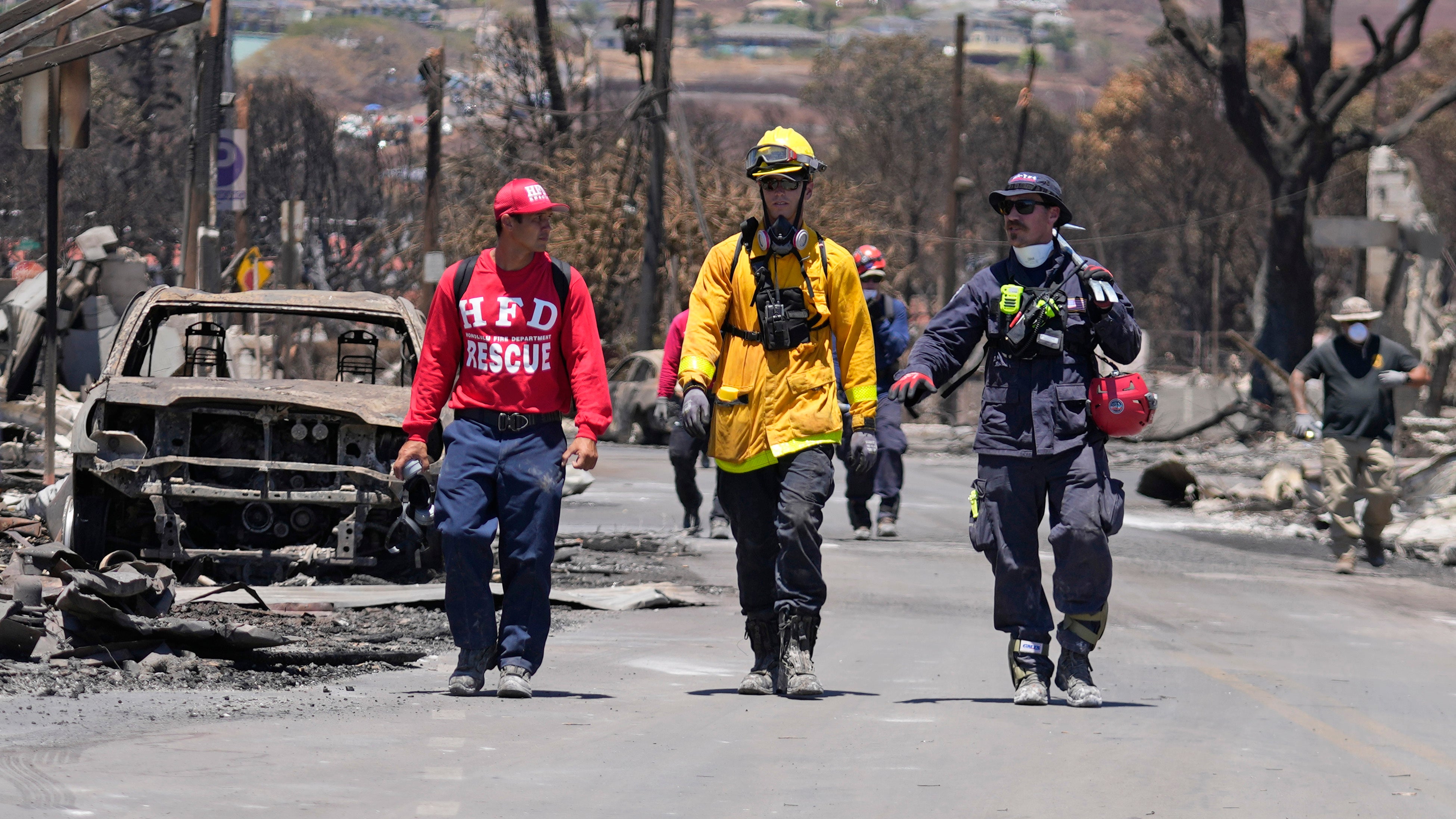Maui wildfire survivors face new threat from chemical contamination that could linger for months
Lahaina residents warned asbestos, lead and arsenic could have contaminated water, air and soil
Your support helps us to tell the story
From reproductive rights to climate change to Big Tech, The Independent is on the ground when the story is developing. Whether it's investigating the financials of Elon Musk's pro-Trump PAC or producing our latest documentary, 'The A Word', which shines a light on the American women fighting for reproductive rights, we know how important it is to parse out the facts from the messaging.
At such a critical moment in US history, we need reporters on the ground. Your donation allows us to keep sending journalists to speak to both sides of the story.
The Independent is trusted by Americans across the entire political spectrum. And unlike many other quality news outlets, we choose not to lock Americans out of our reporting and analysis with paywalls. We believe quality journalism should be available to everyone, paid for by those who can afford it.
Your support makes all the difference.Maui residents have been warned that wildfires burning since 8 August have contaminated water, air and soil and could pose health risks for months to come.
The deadly wildfires have claimed at least 99 lives, and destroyed an estimated 2,700 buildings around Lahaina containing hazardous household wastes, treated wood, paints and other toxic materials, officials said.
The Hawaiian Department of Health has warned that ash and dust from burned homes and businesses could contain deadly toxic chemicals such as asbestos, arsenic and lead.
They also advised residents to wear surgical masks such as N95s and goggles, gloves, and closed-toed shoes to avoid skin contact with ash.
They also warned people to avoid washing ash into drains or using vacuums that will stir up carcinogenic particles into the air.
As wildfires tore through Lahaina last week, residents reported seeing thick plumes of toxic smoke from burning homes, car gas tanks and other materials.
Thomas Leonard, a veteran and retired mailman, told the Associated Press that a propane tank that exploded near his home had created a huge mushroom cloud.
On Friday, Maui County officials issued an advisory calling for residents of Lahaina and Upper Kula to avoid tap water for cooking and drinking and limit shower and bathing time.

A loss of water pressure when buildings were destroyed may have caused contaminants and volatile organic chemicals, to enter the water supply, it said.
“It is a hazardous area and that’s why experts are here,” Maui County Mayor Richard Bissen said during a news conference on Saturday.
“We’re not doing anybody any favours by letting them back in there quickly, just so they can get sick.”
Specialist disaster relief teams from the Environmental Protection Agency had begun removing dangerous items such as propane tanks, Hawaii’s state toxicologist Diane Felton told Hawaii Public Radio.
But as residents begin to return to their homes, Ms Felton warned the clean up of toxic ash and debris could last for months.
“It’s going to be a long time,” she told Hawaiian Public Radio.
Many of Lahaina’s commercial and residential structures were built before the use of lead and asbestos was discontinued in the 1970s, Ms Felton said.
The state had also used arsenic as a herbicide on sugar and pineapple plantations in the 1900s, and it could still be present in the soil.
Exposure to asbestos and lead fibers can cause esophagus, stomach, and intestines cancer, and lead to mesothelioma, according to the CDC.




Join our commenting forum
Join thought-provoking conversations, follow other Independent readers and see their replies
Comments